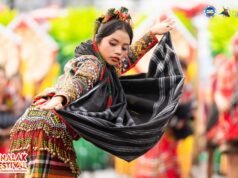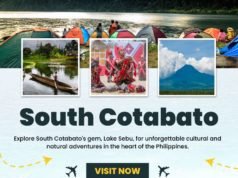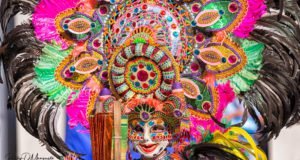South Cotabato Travel Guide: Best Cities, Municipalities & Attractions
Why Visit South Cotabato?
South Cotabato blends mountain adventures, lakeside escapes, and living traditions you can truly feel. Base yourself in Koronadal (the provincial capital and SOX regional hub) for easy routes to Lake Sebu, T’boli, Tupi/Polomolok and nearby gems. Expect cool highland mornings, warm hospitality, woven T’nalak textiles, pineapple plains, zipline thrills, and coffee with views of Mt. Matutum.
Fact check: South Cotabato has 10 municipalities + 1 component city (Koronadal); General Santos is geographically in the province but administratively independent—still a practical entry point with a major airport and seaport.
How to Get There
- By Air: Fly into General Santos International Airport (GES), then travel 1–1.5 hrs by van/bus to Koronadal. Davao (DVO) is a common alternative for multi-city Mindanao routes.
- By Land: From General Santos, frequent buses/vans run to Koronadal, T’boli, Surallah, Lake Sebu, Polomolok, Tupi, etc.
- By Sea: Passenger ferries dock at General Santos with connections around Mindanao and Visayas.
Best Time to Visit
South Cotabato enjoys mild weather and is largely typhoon-free. Expect comfortable temps year-round; highland towns are cooler. Festival highlights include Hinugyaw Festival (Koronadal, January) and T’nalak Festival (July). Plan dry-season treks for Mt. Matutum and lake trips; rainy days are great for museums, weaving centers, and coffee shops.
Things to Do / What to Expect
Lake Sebu & T’boli Culture
- Ride Asia’s famous Seven Falls Zipline, visit Hikong Bente and other cascades, and hop a canoe at sunrise for dreamy lake reflections.
- Meet the T’boli dreamweavers, watch T’nalak weaving, and try on traditional beadwork. Respect local customs—ask permission before photos and buy directly from artisan households when possible.
- Don’t miss tilapia done crisp-fried, grilled, or sinigang by the lake.
Mt. Matutum, Tupi & Polomolok
- Wake to the silhouette of Mt. Matutum from Tupi and Polomolok; hike with accredited guides and LNT (Leave No Trace) basics.
- Snap photos in pineapple plantations and roadside fruit stalls (suha, durian in season). Coffee lovers: side-trip to SOX coffee farms for a farm-to-cup story locals are proud of.
Koronadal City (Marbel)
- The provincial capital and SOX admin center, with parks, public art, food spots, and venues that regularly host regional events and sports. It’s a practical transport hub for day trips.
General Santos City (Gateway & Side Trips)
- Known as the Tuna Capital of the Philippines, GenSan is a foodie pilgrimage for sashimi grades, markets, and the General Santos tuna festival each year. Use it as your arrival/departure base.
Surallah, Banga, Norala, Tantangan, Sto. Niño, Tampakan
- Surallah & Banga: farm circuits, rivers, and rural eats;
- Norala & Tantangan: easy countryside drives, local snacks and pasalubong;
- Sto. Niño: quiet breaks and barangay fiestas;
- Tampakan: jump-off for foothill treks and scenic viewpoints.
Always check LGU advisories for trail/road updates.
Where to Stay / Eat / Buy Local Products
- Stay: Lakeside homestays in Lake Sebu, business hotels/hostels in Koronadal, farm cabins around Tupi/Polomolok.
- Eat: Tilapia feasts at Lake Sebu; pastil, sashimi, and kinilaw around GenSan/Koronadal; fruit stands on the national highway.
- Buy Local: T’nalak textiles, brassworks, bead accessories, woven bags. Support artisan co-ops and community shops.
- Market Hops: Hunt seasonal fruits, coffee, and delicacies across SOCCSKSARGEN local markets.
Travel Tips for South Cotabato
- Culture-first: Dress modestly in indigenous villages; ask before photos.
- Cash wins: ATMs cluster in cities; carry small bills for barangay stores.
- Transport: Vans/buses link major towns; hire habal-habal/tricycles for last-mile.
- Safety: Check LGU and DOT advisories; register for hikes like Mt. Matutum.
- Sustainability: Bring a tumbler, refuse single-use plastics, and keep trails clean.
- Itineraries: Start in GenSan → Koronadal (base) → Lake Sebu (1–2 nights) → T’boli / Lake Holon day-hike/overnight (for experienced hikers) → Tupi/Polomolok coffee + views → fly out of GenSan.
South Cotabato is a province with a diverse set of cities and municipalities. Each city and municipality offers a unique experience and has something different to offer visitors. Whether you’re interested in culture, history, nature, or just a peaceful getaway, South Cotabato has something for everyone.
FAQs
Geographically yes, but GenSan is a highly urbanized city administered independently of the province. It remains the main gateway for flights and ferries.
Ten municipalities plus one component city (Koronadal).
Year-round is fine; conditions are generally mild and mostly typhoon-free. Time your trip for Hinugyaw (Jan) or T’nalak (July) if you want festivals.
Koronadal for central access; Lake Sebu for chill nature days; GenSan if you want urban food + airport proximity.
Go with accredited guides, start early, and prepare for steep sections. Dry months are friendlier.




















